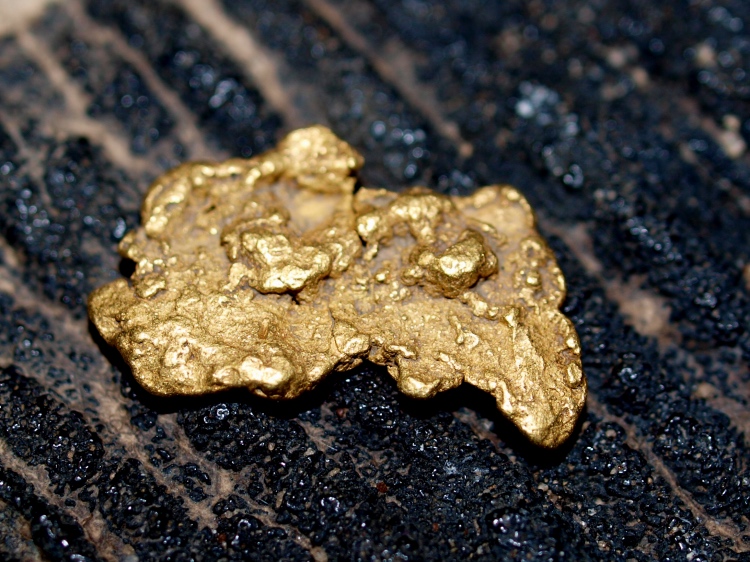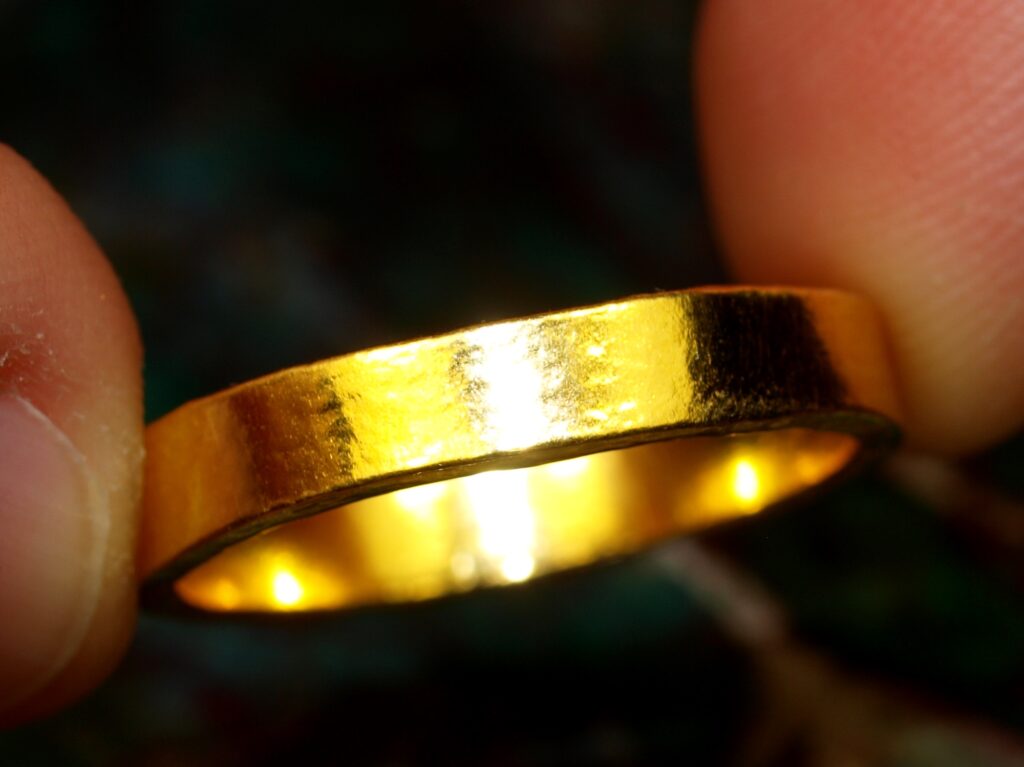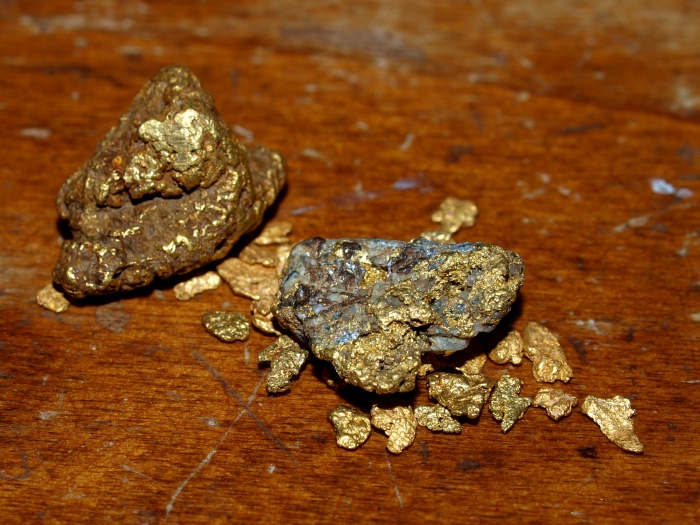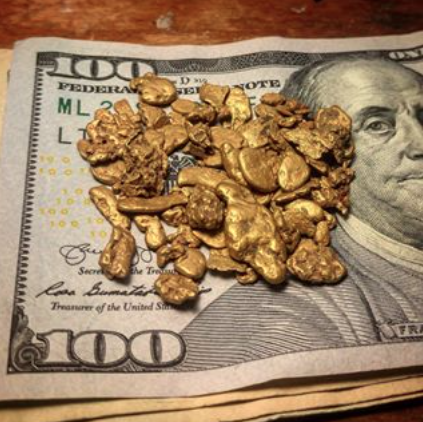
The Short Answer: No.
First and foremost, gold that is found in nature is NEVER 100% pure. The gold is naturally alloyed with a variety of minerals, most commonly silver and copper. This results in a metal that is not truly “pure gold,” but rather a mix of several different metals.
Having said that, most gold nugget are MOSTLY gold. The majority of them will range somewhere between 75% and 90% gold content. The remaining % is usually silver. In a few areas, copper will make up a small percentage (usually less than 5%).
How Many Karats is a Gold Nugget?
Nuggets vary widely depending on where they were found. A gold nugget mined in Alaska might only be around 75% gold content, whereas a nugget found in the California Mother Lode may be 90% gold.
Sometimes people ask how many karats a certain nugget is. Getting a truly accurate answer to that question is actually difficult, maybe even impossible depending on how accurate you want to be.
This is because karats are determined by a process that requires smelting, refining, and mixing alloys to get an accurate mixture. Gold must be refined to true .999 purity, then other metals are added back in.

This ring is made from pure 24k gold and is sold by Slab Creek Designs.
In the jewelry industry, these are the most common karat values:
10k: 41.7% gold content
14k: 58.3% gold content
18k: 75% gold content
22k: 91.7% gold content
These are precise measurements, down to the thousandth of a unit.
Natural gold nuggets on the other hand have not been refined. Therefore, determining the exact purity is impossible. Yes, you can do a simple acid test or use an XRF gun to test the purity. These are great ways to get an estimate as to the purity, but these are “ballpark” figures, and not accurate enough to make a truly accurate assessment as the the purity.
High Purity Gold Nuggets
While we know that no gold nugget is ever 100% pure, there are certain areas that consistently produce some very high purity nuggets.

These big nuggets are from Western Australia. They are very high purity, most likely 95% gold content or higher. You can tell how rich the color is. Australia is known for its high purity gold nuggets.
Lower Purity Natural Gold
There are a few areas that I have seen that produce some lower purity gold nuggets. If the silver content is high enough, these are more accurately defined as electrum.
These nuggets can usually be identified by their darker color, lack of brightness. In the case of electrum, they can have a very “silvery” shine.

These nuggets have a darker color and less brightness. They are likely lower in gold content. They also contain some quartz matrix. If you sent these to the refinery, you would probably be disappointed with their payout. It’s usually better to sell nuggets like this to collectors.
Valuing Nuggets
Some might be surprised to learn that the value of a nugget can have very little to do with its purity. A nice nugget that is 75% pure might sell for MORE than a nugget that is 90% pure. How can this be?
Quite simply, natural gold nuggets are rarely valued for their “melt value.” In fact, sending off placer gold to a refinery is usually not the best way to market it for top value. This is almost always true for nuggets.
The reason is that nuggets have value that is only loosely based on the gold market. Collectors will pay nice premiums for large nuggets. Unusual shapes, crystalline texture, and other factors will all affect the price of a nice nugget.
If you have some raw, natural gold then don’t send it to a refinery. And definitely don’t melt those big nuggets. Collectors will pay over spot-price for them.

The Largest Gold Nugget Found in Alaska
